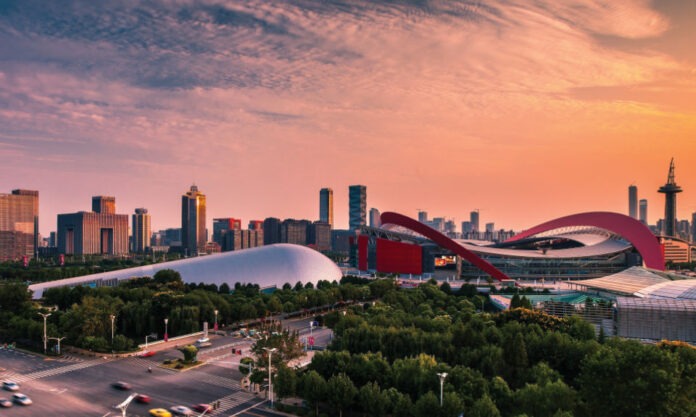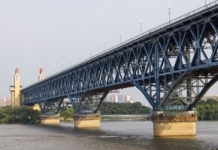In early 2001, China’s General Office of the State Council officially issued the “Letter on Cancellation of the Restriction on the Alternate Hosting of the National Games by Beijing, Shanghai, and Guangdong”, a decision that quickly received positive responses from provinces and cities across the country.
It particularly lit a fire in Nanjing. And it was the first time that China had adopted a bidding method to select the Games’ host.
By the deadline set by the State Sports General Administration, the provinces of Hubei, Jiangsu, Liaoning, Shaanxi and Zhejiang had submitted bids. Amid fierce competition, Jiangsu’s case was not at first looking particularly strong, given that construction of its new sports centre had not officially begun.
Yet, as a coastal economically-developed province with considerable achievement in reform and opening up, Jiangsu’s rapid progress in science and technology, education, culture and sports provided strong support.
And so it was that on 12 July, 2001, the State Council announced their selection for Jiangsu to host the 10th National Games in 2005. And just as the Provincial Capital would need to repeat for the Youth Olympics the following decade, the race was on.
The 10th National Games was to not only exceed the previous Games hosted by Guangdong in its total number of events, but would also see the debut of several winter disciplines. That meant even greater requirements for venue construction.
An invitation to compete for the Sports Centre’s design plan was issued to the world the following month, with Australian global design, architecture, engineering and planning firm, HOK, going on the win the day.
While they chose a hyperboloid top structure to ensure maximum field of view from all spectator seats, their design is distinctive for its giant red arches.
According to James Chen, then the on-site representative of HOK, the choosing of “Jinling Red” for their colour was on account that under the sky of Nanjing, red is brighter and can best express the enthusiastic feeling of sport.
Construction was further complicated by the fact each of those single giant arches weighs 1,400 tonnes and has an inclination of 45 degrees.
The big day came on 4 September, 2005, with the Centre’s inauguration ceremony. But it was significant too for another less well-remembered reason. The 10th National Games in Nanjing was also a rehearsal, for China’s first ever hosting of the Olympic Games that was to come in Beijing some 3 years later.
Post 2005, in preparation for 2014, a Youth Olympic venue renovation project was successfully completed, part of which providing for the swimming pool to be in full compliance with FINA’s construction standards.
In these intervening years, some of the world’s most respected names have had their eye on Nanjing Olympic Sports Centre. The much-venerated former Premier, Jiang Zemin, made an inspection in 2009, during which he specifically asked about the Centre’s power construction configuration and load usage.
Then there came then IOC President, Jacques Rogge, who popped in during 2010. He said, “I am very happy to see that the Olympic Sports Centre has become an activity venue for citizens. This is a very good example for how to build competition venues. It provides a good reference”.












